Figures & data
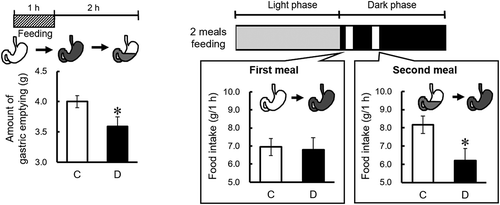
Figure 1. Diagram for feeding schedules.
Time restricted-fed groups in experiment 1 were given meals from 8:30 to 11:30, 12:30, or 14:30 (3 h, 4 h, or 6 h, respectively). The twice-daily fed group in experiment 2 was given meals two times per day for 1 h each session (9:00‒10:00 and 12:00‒13:00). The black zone shows the dark phase without food availability; the white zones show food availability during the dark phase; the gray zone shows the light phase without food availability.
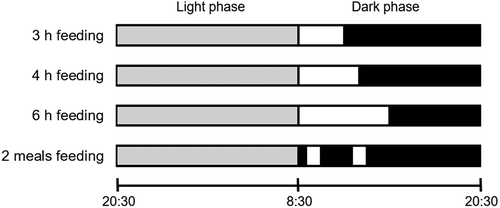
Figure 2. Effects of dietary daidzein (0.3 g/kg diet) on daily food intake (a-c), food intake for 1 h before sampling of gastric contents (d-f), and the amount of gastric emptying (g-i) in time restricted-fed ovariectomized rats (experiment 1).
On the final day of the experiment (day 6), the gastric content was collected 2 h after a one-hour feeding. Amount of gastric emptying was calculated using the following equation: amount of gastric emptying = (food intake for 1 h) − (dry gastric contents 2 h after a one-hour feeding). Each value represents the mean ± SEM (n= 8). Asterisks show significant difference relative to the control group, determined by an unpaired Student’s t-test (*P< 0.05; **P< 0.01). C, control group; D, daidzein group.
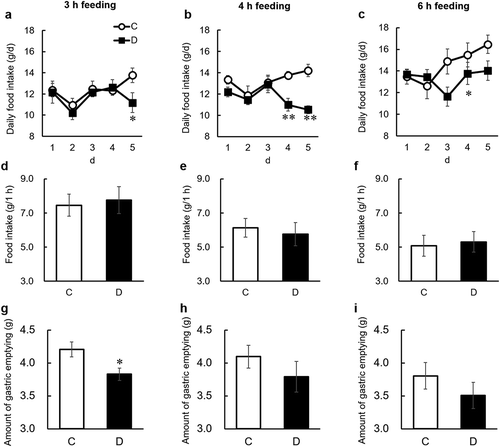
Figure 3. Effects of dietary daidzein (0.3 g/kg diet) on food intake during the first session (a), second session (b), and daily food intake (c) during the experimental period in twice-daily fed ovariectomized rats (experiment 2).
Each value represents the mean ± SEM (n= 10). Asterisks show significant difference relative to the control group, determined by an unpaired Student’s t-test (*P< 0.05). C, control group; D, daidzein group.
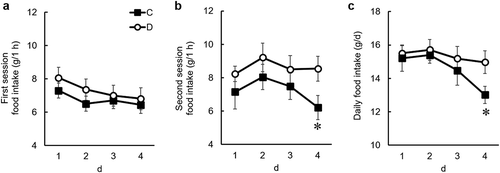
Figure 4. Diagram of the time schedule on the final day of the experiment (a), and effects of dietary daidzein (0.3 g/kg diet) on food intake for 1 h (b) and the amount of gastric emptying (c) on the final day of the experiment in twice-daily fed-ovariectomized rats (experiment 2).
On the final day (day 5) of the experiment, the gastric content was collected 2 h after a one-hour feeding. Amount of gastric emptying was calculated using the following equation: amount of gastric emptying = (food intake for 1 h) − (dry gastric contents 2 h after a one-hour feeding). Each value represents the mean ± SEM (n= 10). Asterisks show significant difference relative to the control group, determined by an unpaired Student’s t-test (*P< 0.05). C, control group; D, daidzein group.
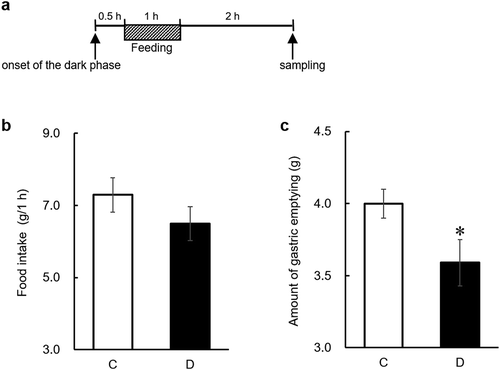
Table 1. Effect of dietary equol (0.15 g/kg diet) on serum isoflavone concentration in ovariectomized rats with and without sleeve gastrectomy.
Figure 5. Effect of dietary equol (0.15 g/kg diet) on daily food intake in ovariectomized rats with and without sleeve gastrectomy (SG) (experiment 3).
Each value represents the mean ± SEM (intact groups, n= 8; SG groups, n= 6). Asterisks show significant difference relative to the control group, determined by an unpaired Student’s t-test (*P< 0.05; **P< 0.01). C, control group; E, equol group; non-SG, intact groups; SG, sleeve gastrectomy operated groups.
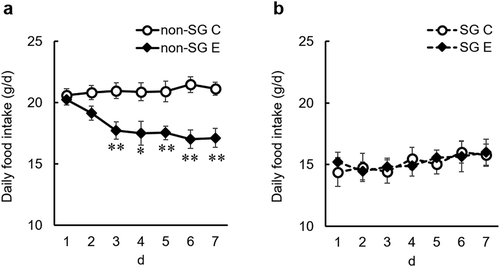
Data availability statement
The data described in this article are openly available in the Open Science Framework at DOI:10.17605/OSF.IO/TPA6U.
